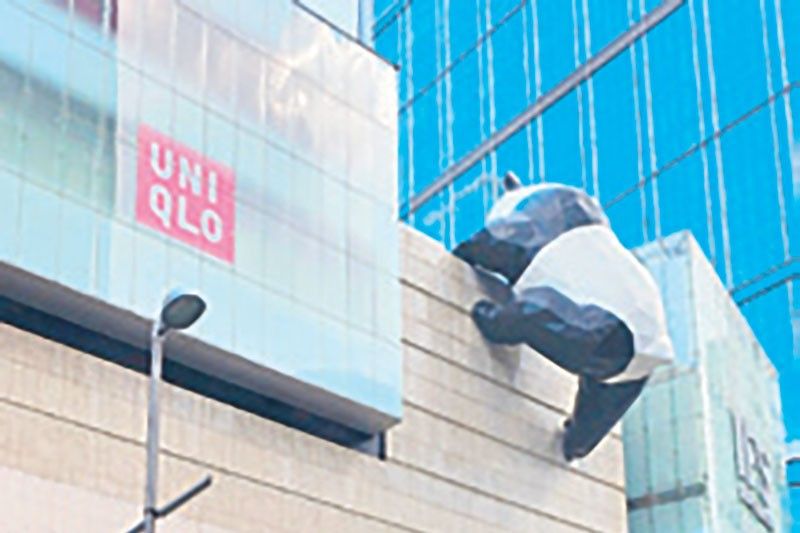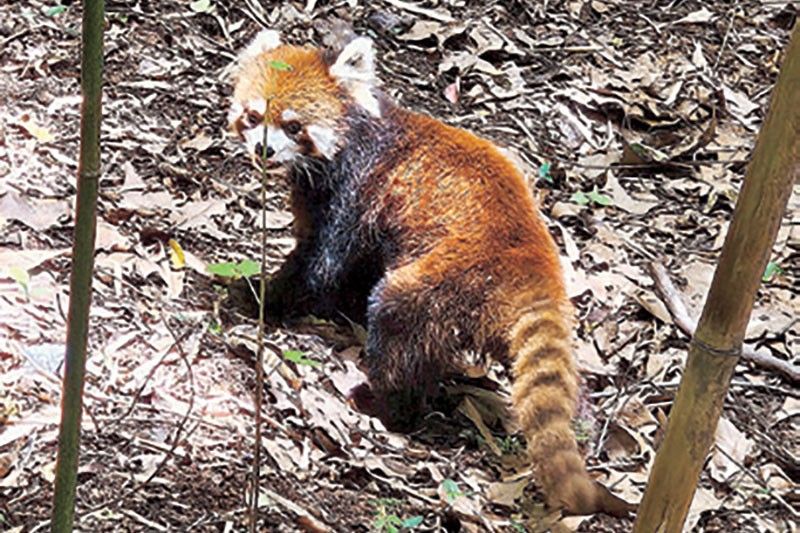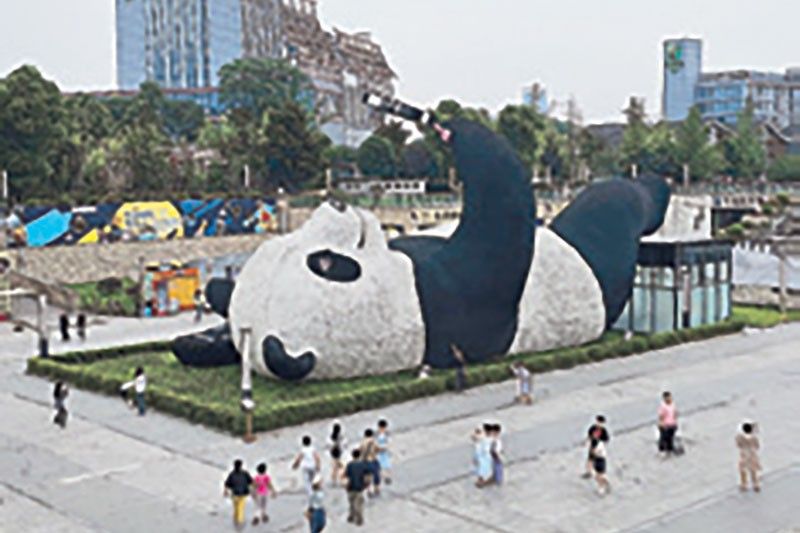'Panda-Monium' in Chengdu

Chengdu has changed since I was last there years ago. It is obviously more modern and is still the panda capital of the world. The panda population increased after efforts to save it and in the last few years and in 2016, it was reclassified on the Red List of the International Union for Conservation of Nature from “endangered” to “vulnerable.”
The Sichuan Giant Panda Sanctuaries in Wolong, Mount Siguniang and Jiajin Mountains is home to more than 30% of the world’s vulnerable pandas. These sanctuaries cover 924,500 hectares with seven nature reserves and nine scenic parks in the Qionglai and Jiajin Mountains and became a UNESCO World Heritage Site in 2006.
One need not go too far to see a panda, as the Chengdu Research base panda-breeding center is near downtown Chengdu. It is home to several giant pandas and its relative, the red panda. I marveled at these adorable, endangered animals then and am still enthralled to this day.

Inside and out of this center are vendors selling every imaginable panda souvenir one can find: pens, caps, umbrellas, bags, stuffed toys, and others. These vendors also extend to the streets outside main, high-end shopping areas such as the IFS or International Finance Square, where a giant panda climbs over the building part of the 210,000-square meter shopping mall.

Chengdu is the capital of China’s Sichuan province, known as the panda’s natural habitat and for its Sichuan pepper used in their spicy dishes! Sichuan is also near Tibet, so a lot of places we visited outside Chengdu were in the Ngawa Tibetan and Qiang Autonomous Prefecture or Aba Prefecture.
Heading out of Chengdu, we visited a Qiang Village filled with white stones and ancient totem patterns. Qiang is one of the oldest ethnic minorities in China, which can be traced back to the era of Emperors Yan and Huang. The Qiang people take white stones as gods to be worshipped and place them on hilltops, roofs, crossroads, and shrines. Baishi Qiang Village, located in Mao County, Sichuan Province, is where they have lived for generations. This white-stoned minority village was severely damaged in the Wenchuan earthquake in 2008. A new Qiang village is built on the original site, which maintains their traditions of ancient ston

e-block houses.
From a rebuilt city, we went to a natural wonder: the Aba Prefecture’s beautiful Zhaga waterfall is China’s tallest calcified waterfall and largest travertine waterfall. It is 93.2 meters high and 35 meters wide with an elevation of 3,270 meters above sea level.
A must-see is the beautifully reconstructed ancient town of Songpan of Songpan County, one of the 13 counties administered by the Ngawa Tibetan and Qiang Autonomous Prefecture. It was considered the West Portal of Sichuan and functioned as a military base from the time of the Tang Dynasty when it was founded in 618-907 and was rebuilt during the Ming Dynasty (1368-1644). The original ancient city gates are well preserved, and the city is lined with shops selling different types of mushrooms and the famous Sichuan chili pepper and red and green peppercorns (a misnomer since it is actually a citrus fruit) that are the main ingredients of hotpot, a dish that originated in the Sichuan Province.
The Tibetan village in Chuanzhusi Town was as close as I got to Tibet and with all the Tibetan structures and colors, already looked like Tibet! This ancient town sits at an altitude of 2,980 meters. It is a peaceful, exotic town with a mix of Tibetan culture and natural scenery. Here, I bought some Tibetan hats and shawls and had a (vegetable-heavy) Tibetan dinner, but I still didn’t have the stomach to try the tea with yak’s milk.
Heading back to Chengdu, I learned about the historic irrigation system of Dujiangyan, formerly named Guanxian or Guan County (“irrigation county”), which was renamed after the Dujiangyan Irrigation System, famous for providing Chengdu with water for over two millennia, since 250 BC! The ancient Dujiangyan Irrigation System (DIS) was listed as a UNESCO World Heritage Site in 2000. DIS still plays a crucial role in flood control, irrigation, and water supply for Chengdu Plain in Sichuan Province.
The advances in science and technology achieved in ancient China are graphically illustrated by the DIS, which is appropriately arranged in accordance with the terrain and topography of the river and Chengdu plain, successfully solving the problem of sand discharge, flood control, and water distribution. This water-management scheme is still in use today to irrigate over 5,300 square kilometers of land!
Another interesting natural phenomenon to see is Chengdu’s bioluminescent “blue tears” light and shadow show that features a unique luminescent microorganism that, when stimulated, will emit a blue light. They have applied this microorganism to the water scene, making the lake and river emit a mysterious blue light at night. Nanqiao Bridge, a historic landmark in Dujiangyan, offers the perfect vantage point to view this mesmerizing natural spectacle. The bridge itself is lightly illuminated, ensuring safety without detracting from the natural light show below.
A
visit to Chengdu would not be complete without seeing the gigantic “Selfie Panda” sculpture by Dutch artist Florentijn Hofman in Yangtianwo square in Dujiangyan. Hofman is the same artist who created those famous giant rubber ducks floating on the Hong Kong Harbour! More than three million strands of painted stainless-steel wire were screwed into the 26.5-meter perforated aluminum body of the sculpture to create a tactile and weatherproof fur coat. The panda’s selfie stick showcases a large, programmed LED screen with a camera embedded into it. This sculpture was inspired by a real giant panda that went astray in downtown Dujiangyan in 2005.
These activities are part of the Chengdu and Jiuzhaiguo package tour offered by Horizon Travel & Tours in the Philippines and it was a five day, once-in-a-lifetime trip for me. Jiuzhaiguo is really a sight to see, but more on that in next week’s story!
* * *
Air China’s Airbus 320 is the only airline flying directly to Chengdu from Manila. Flights from Manila to Chengdu are on Tuesday, Thursday, and Saturday and flights from Chengdu to Manila are on Monday, Wednesday, and Friday. Flights will be increased to 4x a week starting November 2024 (winter season). Check out https://www.airchina.com.ph/PH/GB/Home.
Horizon Travel & Tours, Inc. is located at 490 Potenciana Mansion, Sta. Monica St., Ermita, Manila. For inquiries, call landline 5328-3381 / 5328-3385 / 5328-3388 / 8521-3224 / 8521-2586 / 8523-8637 or mobile numbers 0917-807-2538 / 0998-857 -7017 / 0917-817-8686 or email [email protected]. Check out https://www.horizontravel.ph/.
Follow me on Instagram @pepperteehankee.
- Latest

























